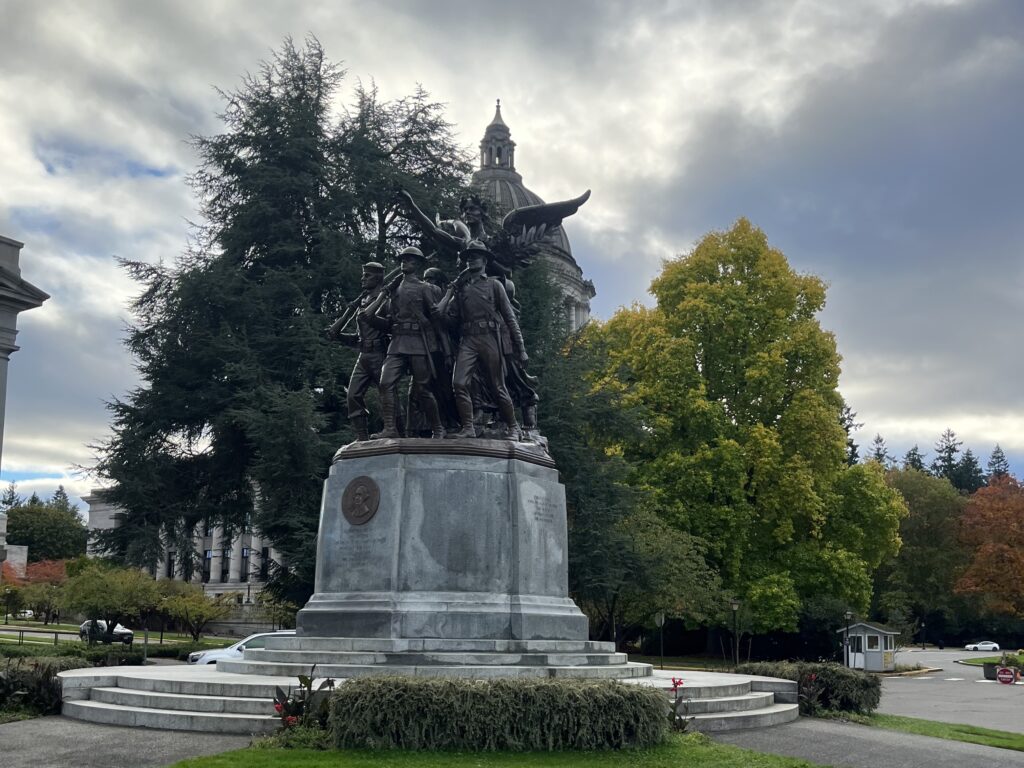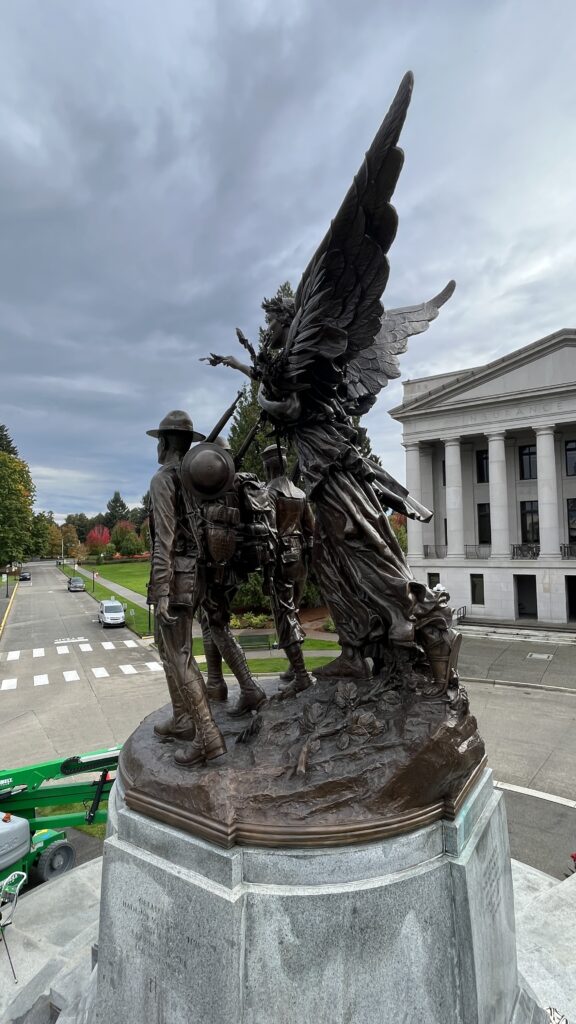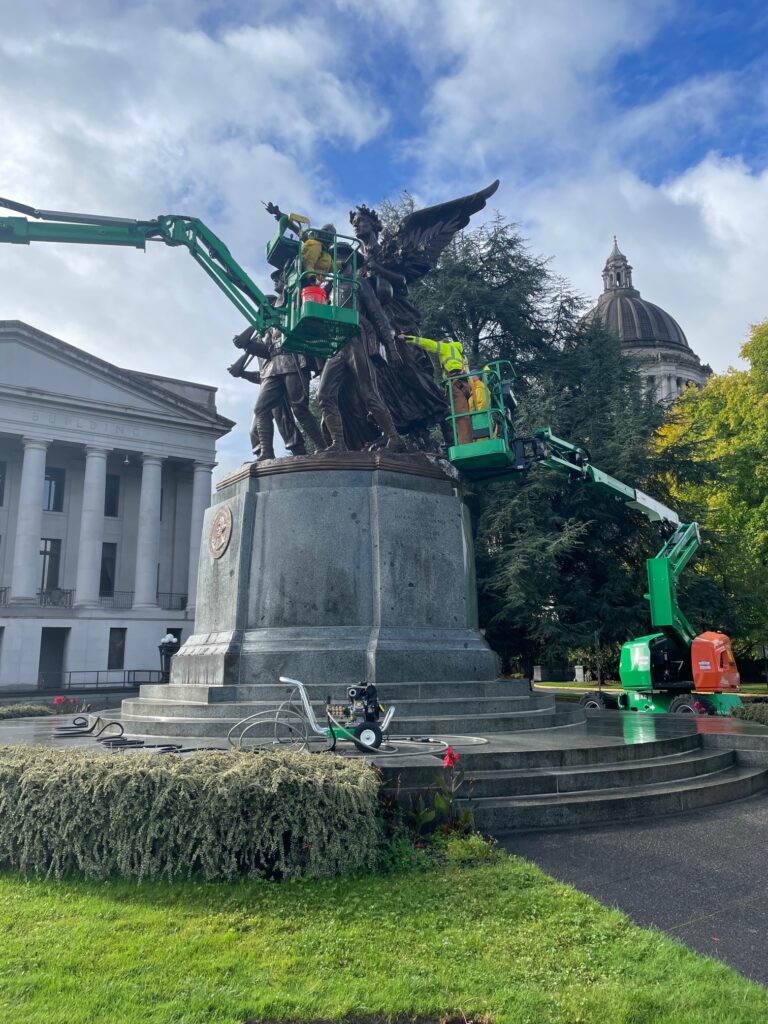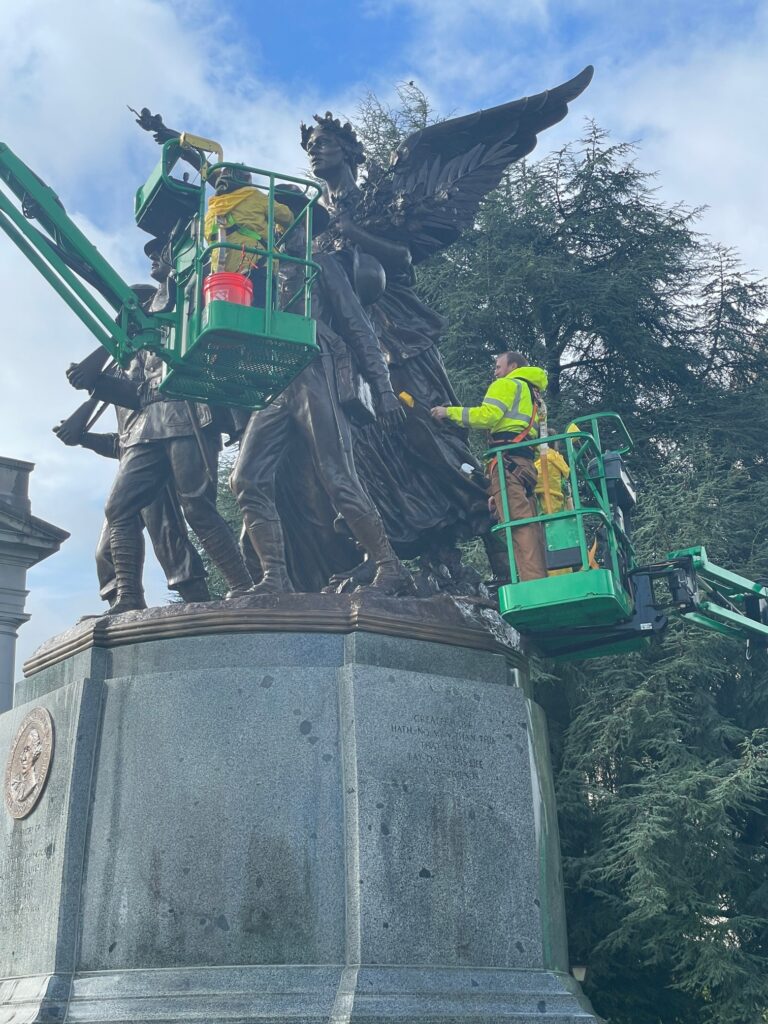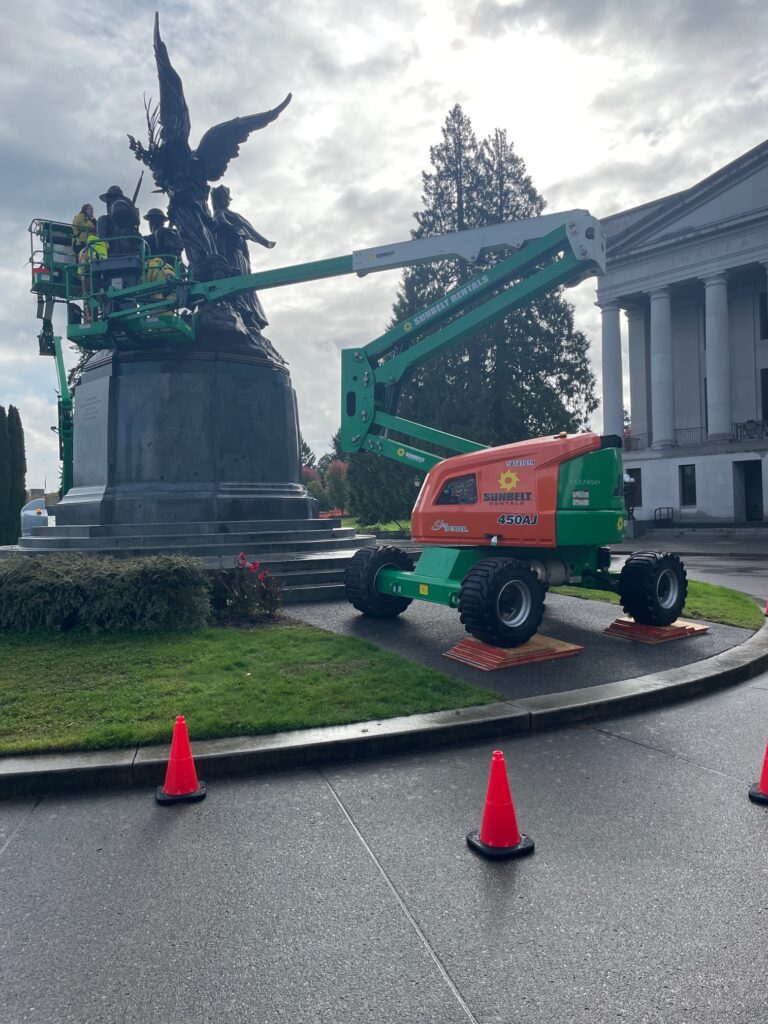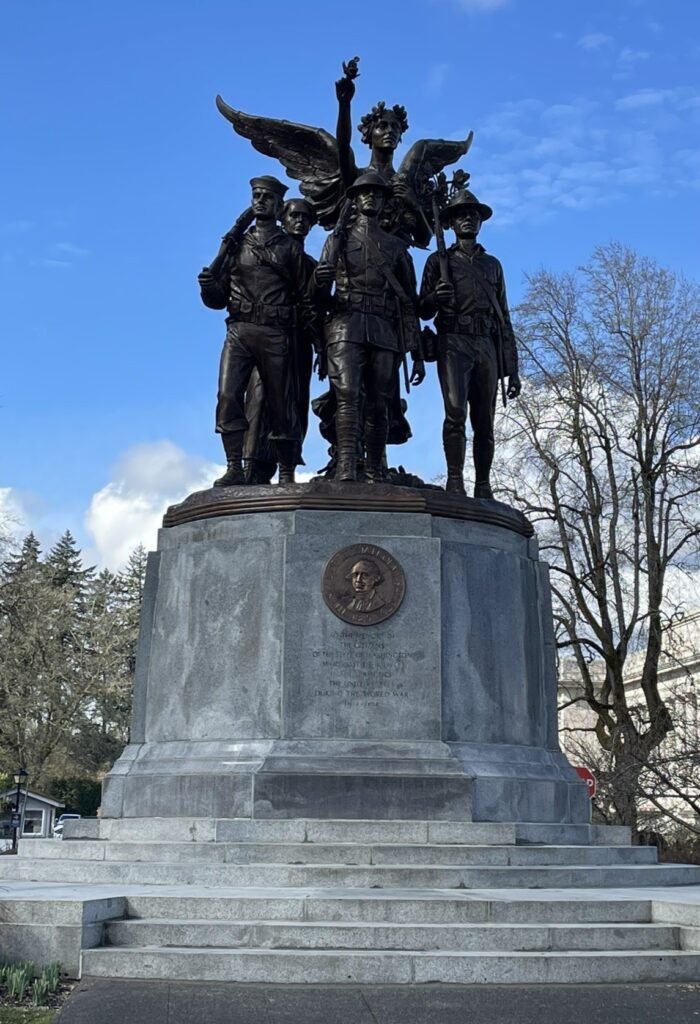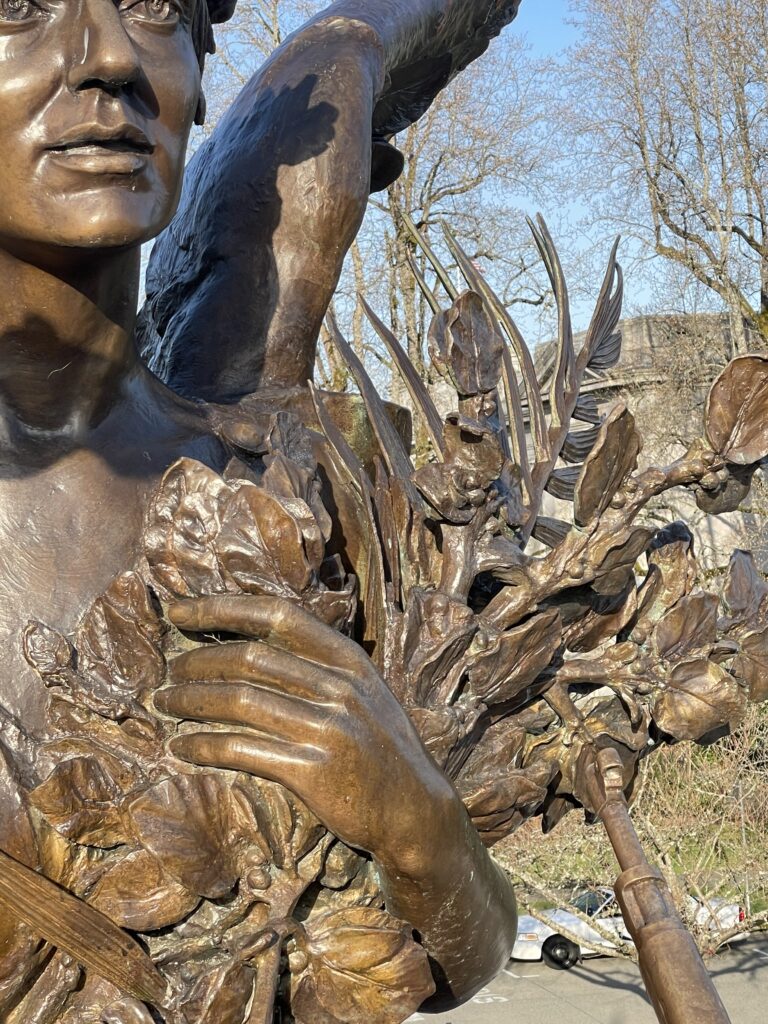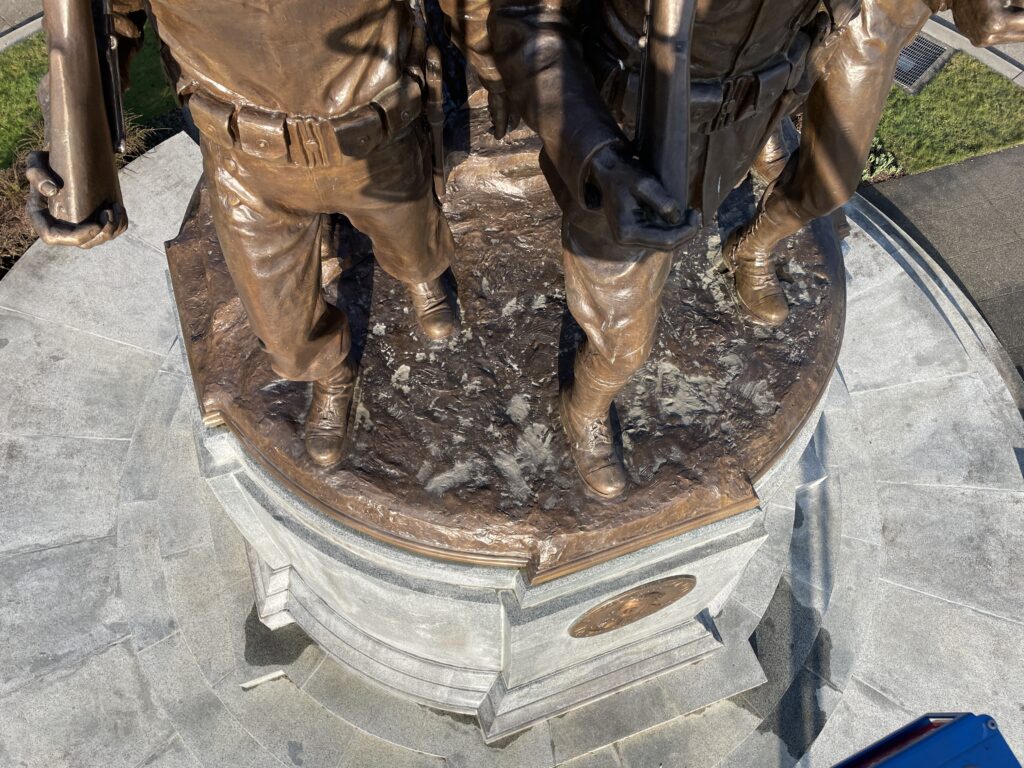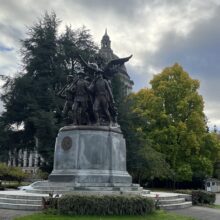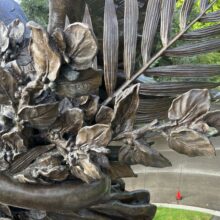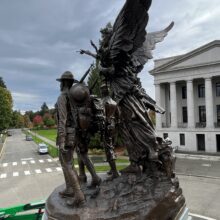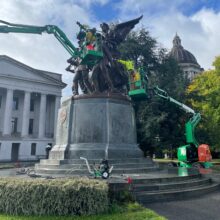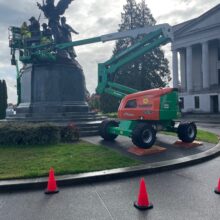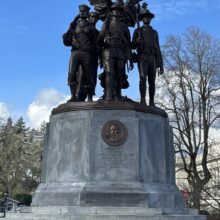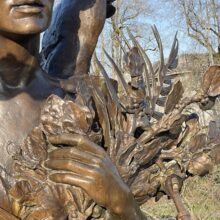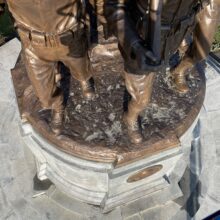Winged Victory Sculpture
The Winged Victory monument was created as a memorial honoring those who lost their lives in World War I (WWI). It was funded by the Washington State Legislature in 1919 and housed on the grounds of the State Capitol in Olympia, Washington. It took several years for the project to get underway, but by 1927 Alonzo Victor Lewis, the artist chosen for the project, had approval of his designs from the government. One of Washington’s finest sculptors, Lewis is responsible for several well known sculptures, including American Doughboy Bringing Home Victory (1932) in Evergreen-Washelli Cemetery in Seattle, as well as the The Sentinel memorial sculpture (1924) in Centralia, Washington.
Lewis designed the monument using bronze and granite to match the classical revival architecture in the newly constructed surrounding capitol buildings. He placed the 12-foot bronze figure of the famous Greek statue of Nike of Samothrace, the goddess of victory in war, protectively behind roughly life-sized bronze figures of a soldier, a marine, and a sailor, each of whom represented one of the three main American military forces during WWI. The figures sit atop a 10-foot tall granite base, with words honoring those who lost their lives during WWI on all four sides. The statue was completed in 1938, being dedicated on Memorial day of that year.
The monument has been treated on numerous occasions, between 1979 and the present. It has been lightly sandblasted, treated with a stain remover, and coated with various protective coatings. In 2007 an extensive conservation treatment study was performed, including both historic research on fabrication, installation, and subsequent treatments, as well as in-situ testing of as is conditions. Currently, the statue is cleaned annually with a gentle detergent and water and checked for any deterioration or wear in the coatings.
EverGreene was contracted by the Architectural Resources Group and the State of Washington to conserve the Winged Victory monument. The bronze and granite portions of the monument were thoroughly cleaned using a non-ionic surfactant and pressurized water to remove dust and debris. Any areas of old deteriorated coating on the bronze statues was removed and any areas of corrosion was re-patinaed to conceal areas of corrosion and unify the appearance. The bronze was then topped with a protective coating, which acts as a sealer, protecting from UV, moisture, and other environmental pollutants; color adjustments were made using the coating material as necessary to create a unified appearance. EverGreene was also contracted to create a maintenance plan, which supports future care and conservation of the monument.
